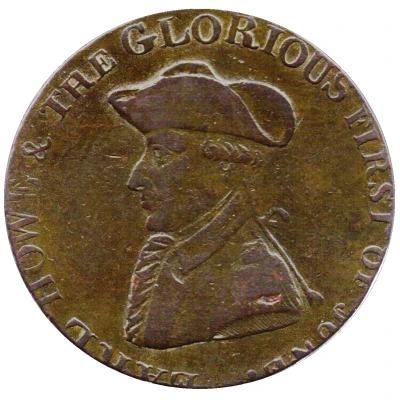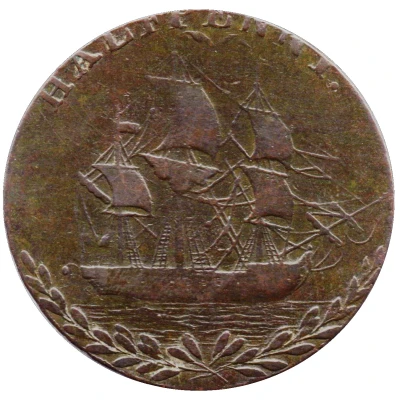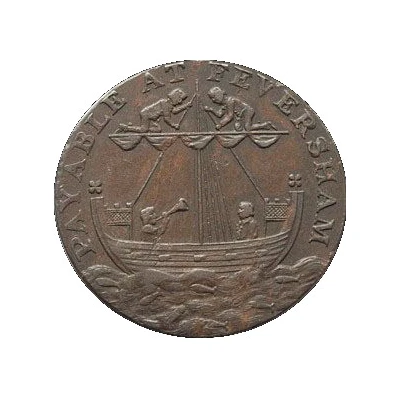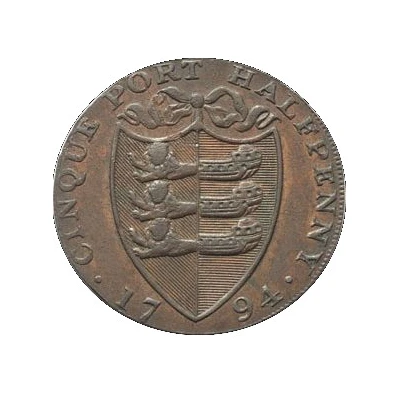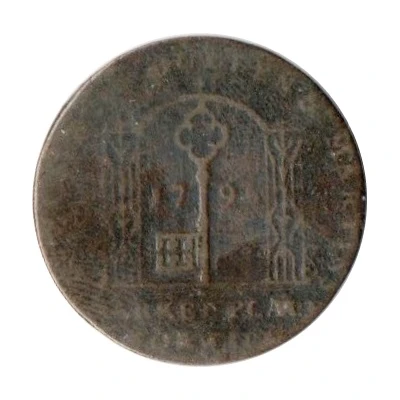


Obverse © gothicanger
½ Penny Norfolk - Norwich / Bullen and Martins
1794 year| Copper | 10.6 g | 28.5 mm |
| Issuer | United Kingdom (United Kingdom, British Overseas Territories and Crown Dependencies) |
|---|---|
| Type | Token |
| Year | 1794 |
| Value | ½ Penny (1⁄480) |
| Currency | Conder tokens (1787-1797) |
| Composition | Copper |
| Weight | 10.6 g |
| Diameter | 28.5 mm |
| Thickness | 1.5 mm |
| Shape | Round |
| Technique | Milled |
| Orientation | Medal alignment ↑↑ |
| Demonetized | Yes |
| Updated | 2024-10-08 |
| Numista | N#53883 |
|---|---|
| Rarity index | 89% |
Reverse
An old plough below a shuttle. Legend around, toothed border.
Script: Latin
Lettering: SUCCESS TO THE PLOUGH & SHUTTLE.
Engraver: Thomas Wyon the Younger
Edge
Plain
NOTE: varieties exist
Comment
Joshua Bullen and Martin were ironmongers and iron workers in the Market Place, Norwich. The plough was an unusual type they probably had for sale. Dies by Wyon; manufactured by Kempson; also in silver. (Conder p.119, 15; Pye p.39, 3; Virt p.37)During the late 1700's and early 1800's there was enough currency to support commerce in the big cities but rural areas of Great Britain suffered greatly from a shortage of low-denomination (copper) coin of the realm. Merchants and others would produce their own coinage in the form (usually) of penny and half penny tokens.
Interesting fact
One interesting fact about the Token ½ Penny (Norfolk - Norwich / Bullen and Martins) 1794 from United Kingdom is that it was issued during a time of severe coinage shortages in the late 18th century. To address this issue, many merchants and traders began issuing their own tokens, like this one, which were accepted as currency by the local community. This coin's design features an image of a bull on one side and a martin (a small bird) on the other, which were the symbols of the issuing companies, Bullen and Martins. Despite being issued by private companies, these tokens were widely accepted and used as currency throughout the United Kingdom.
